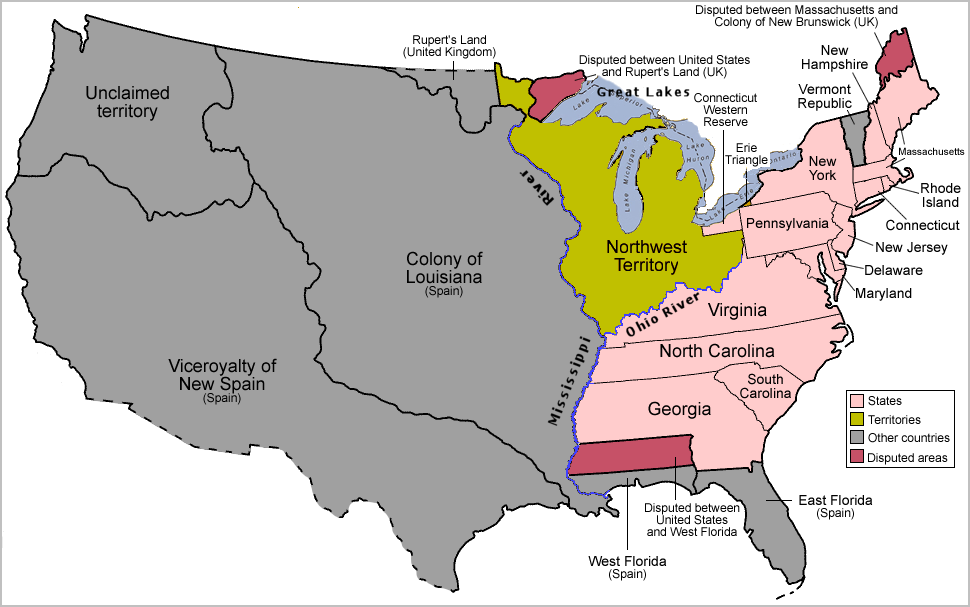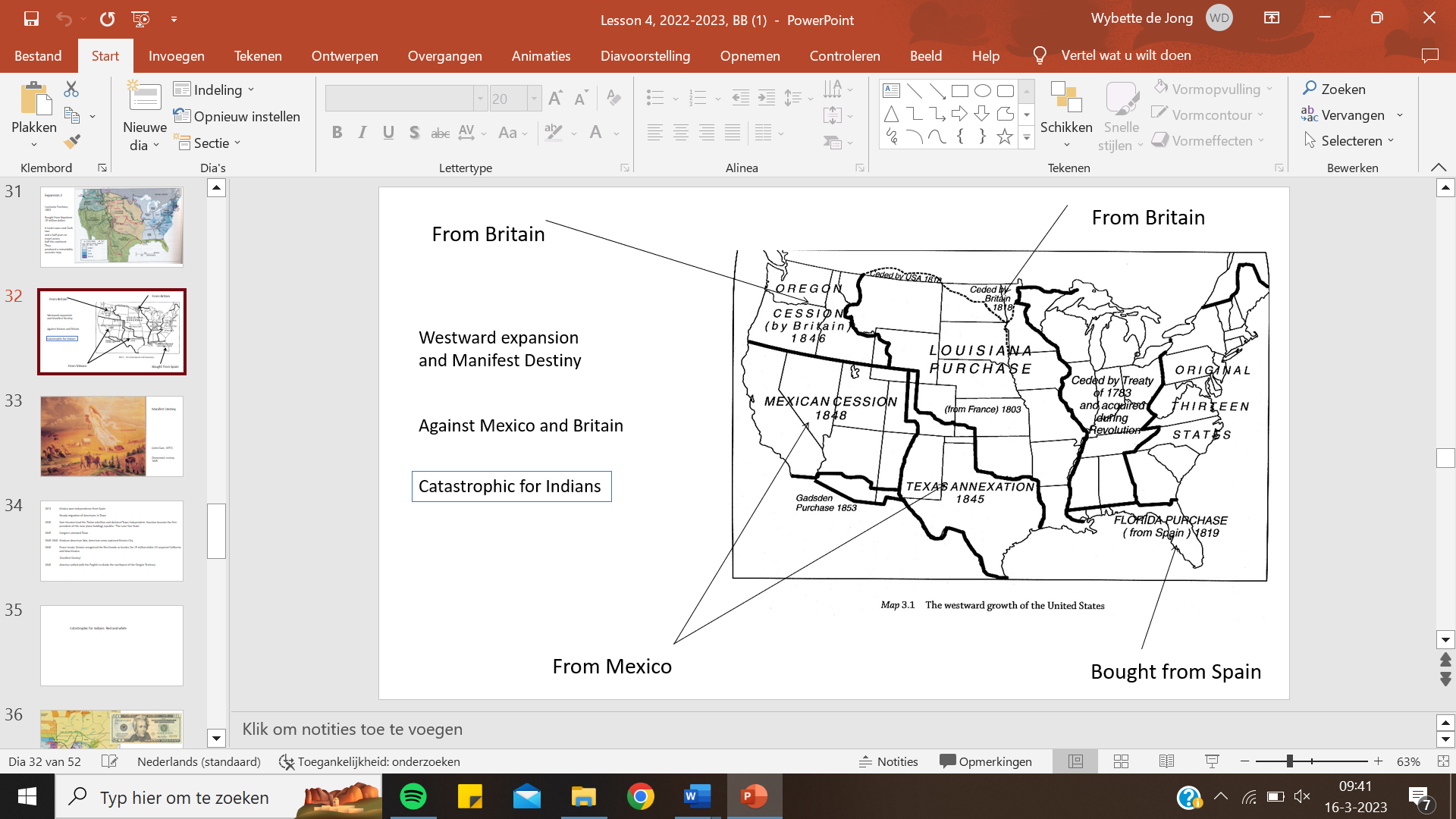History week 4
5.0(1)
Card Sorting
1/22
There's no tags or description
Looks like no tags are added yet.
Study Analytics
Name | Mastery | Learn | Test | Matching | Spaced |
|---|
No study sessions yet.
23 Terms
1
New cards
What is mobocracy
The rule of the “uneducated“ no property owning masses
2
New cards
representative democracy
Power should not rest in the whole people, a numerical majority, but in a picked and selected group.
3
New cards
What did Thomas Jefferson emphasize?
Agrarian interests and states’ right, strongholds in the southern states, especially Virginia
4
New cards
What do federalists think
Government should regulate individual behaviour for the good of society and protect property
from the violent and the unruly. Popular power had to be restrained, and the role of the people was
to choose leaders from societies best men.
from the violent and the unruly. Popular power had to be restrained, and the role of the people was
to choose leaders from societies best men.
5
New cards
What do republicans think
Embraced the virtues of individualism, hoping to reduce government to the bare essentials to free
individuals to develop their full potential without interference.
individuals to develop their full potential without interference.
6
New cards
The treaty of Paris
Between the American colonies and Great Britain, ended the American Revolution and formally recognized the United States as an independent nation.
7
New cards
Expansion 1

8
New cards
Expansion 2

9
New cards
What countries and kingdoms were leading the westward expansion and manifest destiny and who was suffering under all of this?
Britain and Mexico and it was catastrophic for the Indians.

10
New cards
What is the trail of tears
Resisting Cherokees in Georgia were round up by the U.S. Army and were forced, at bayonet point, to join the westward march. Of the 15.000 who travelled this *Trail of tears*, approximately one-quarter died along the way of exposure, disease, and exhaustion.
11
New cards
What did the cotton Gin enhance?
Slavery. The cotton gin made cotton into clothing and other products. Because this proces was very benefitial to the trade of clothing, they needed more cotton in the process. This enhanced the need for cotton and therefore, the need for slaves at that time.
12
New cards
The war of 1812
1812–February 17, 1815, conflict fought between the United States and Great Britain over British violations of U.S. maritime rights. It ended with the exchange of ratifications of the Treaty of Ghent.
13
New cards
One remarkable development of the new system occurred in the judicial branch, where the Supreme Court of the United States swiftly acquired an importance far beyond that envisaged by the framers of the constitution.’
John Jay, the first chief, saw his role as a part time function. Then from 1801 to 1835, John Marshall who made the role of the court a pivot of the federal government and an extraordinarily effective check upon the other branches. His decision in the 1803 case of marbury v. Madison established the principle that the court had the right and duty to overrule laws passed by congress when those laws violated the constitution.
14
New cards
Donald Trump boasted in 2018, ‘The Supreme Court is one of the main reasons I got elected President.’ Explain why Donald Trump may have been right about this and why he should have thank John Marshall for this.
Because John Marshall made the supreme court such an important factor, someone could really change the laws by putting a judge of their choice in the supreme court. When one of the judges of the supreme court Trump criticized died, he said he would choose a better judge to fill his spot and therefore gain a lot of voters.
15
New cards
The differences the republican and federalist parties.
**Federalists:** Government should regulate individual behaviour for the good of society and protect property from the violent and the unruly. Popular power had to be restrained, and the role of the people was to choose leaders from societies best men.
**Republicans:** Embraced the virtues of individualism, hoping to reduce government to the bare essentials to free individuals to develop their full potential without interference.
**Republicans:** Embraced the virtues of individualism, hoping to reduce government to the bare essentials to free individuals to develop their full potential without interference.
16
New cards
War of 1812-The United States was not unified in this war, and the political split assumed *regional* forms. Explain.
The country split into “war hawks” concentrated in the south and west and dovish (anti-war) new England.
17
New cards
Describe the outcome of The War of 1812.
The war of 1812 ended in a draw on the battlefield, and the peace treaty reflected this.
18
New cards
At the start of the 1800’s a great expansion happened at a pace barely paralleled in human history.’ Describe this expansion.
Multiple routes were used to go westward and this caused great travelling waves. The new lands often fell into a shadowy legal realm, where borders were ill-defined.
19
New cards
Describe the consequences of the expansion for the native inhabitants.
The settlers were not moving into unpopulated territory, and conflict erupted with the native inhabitants. A major problem was the different concepts of legality held by the respective sides: while whites believed they had bought a given area quite fairly, Indians often argued that the sellers had no right to trade in tribal property, and even that land as such could not be sold. Throughout the 1820’s pressure for their removal mounted and the inauguration of president Andrew Jackson in 1829 provided the ideal opportunity for the advocates of white settlement – still worse for the Indians, in 1829 gold was discovered on Indian lands in Georgia. The tribes were pressed to accept relocation in a new ‘Indian territory’ west of the Mississippi and at least some of the elements of the leadership did consent. In 1830 Jackson signed the Indian Removal Act. These actions were probably illegal as well as high-handed, and Jackson ignored the condemnation of the US supreme court.
20
New cards
In the first half of the nineteenth century was a period of economic growth. According to Jenkins the model site of the new era was the textile town of Lowell in Massachusetts. (p61, paragraph ‘Economic growth’) Clarify.
The first mill was founded and the town of Lowell became the Manchester of America, but was admired less for its productivity than the extreme paternalism exercised over its workforce. As an industrial proletariat was unsuitable for the American republic, the mill-girls of Lowell were expected to work only long enough to acquire enough money to establish themselves when they returned to their proper role as rural housewives.
21
New cards
In what way can you connect the phenomenon that ‘American religion was shaped by the successive revivals’ (p64, paragraph ‘Religion and culture)) to the ‘democratic doctrine’ named on page 63 (second page paragraph ‘Freedom is a habit’)?
In the early 1800’s both the democratic doctrine and the revivals had endured big changes and this resulted in big religious changes.
22
New cards
‘The expected withering away of southern slavery never occurred, due to the invention of the cotton gin by Eli Whitney in 1793.’ Clarify this statement.
Because the cotton gin was invented, the seperation of the seeds from the cotton was done 50 times faster than human hands could. This created a massive demand for raw cotton, which meant more slave labour.
23
New cards
In which way became the population expansion of the United States intertwined with slavery?
Because the demand for cotton was so high, there was also need for new land to plant this. The need for plantation land drove southern settlers into several new states. Slavery grew alongside cotton production.